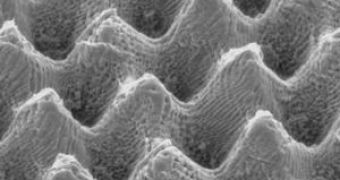After a drinking session with your buddies while watching a game, the last thing you would like to do is wash after.
But what if the cups you have used do not require washing?
This could be soon possible, as a research has investigated a way to make a self-cleaning surface like that of the leaf of a Lotus plant, which lets beverages no chance to stick on.
This, of course, would have many more applications.
Using an ultra fast femtosecond laser on plastic surface, PhD student Max Groenendijk of the Applied Laser Technology Group of the University of Twente (Netherlands) got remarkable results.
The Lotus leaves present numerous tiny pillars with a wax layer on top, which keep water droplets away, mold them into a spherical shape, impeding them to cover the surface.
This way, dirt particles cannot stick to the surface through water.
The researchers wanted to make a similar surface, but without using wax.
The light pulses are so short that they can be seen as light 'bullets' with which the surface is bombed.
Groenendijk first used light laser pulses on the surface to get a fine ripple structure.
The achieved pattern was molded through laser's speed, intensity and polarization.
After that, Groenendijk made a pattern of perpendicular lines, resulting into an array of pillars.
This double structure does not require waxing and is extremely hydrophobic.
A mold of this structure would produce cheap hydrophobic surfaces.
"Even for materials that are quite hydrophobic by themselves, the structure can improve the properties drastically," said Groenendijk.
This structure does format the spherical droplets seen on the Lotus leaves, unlike smooth surfaces that can still smear liquids.
Moreover, this surface feels like silk, which is very appealing.
An alternative for self cleaning would be a coating, but an unstructured coating will never be as good as the new laser technique.
Groenendijk and the investigation team now want to find structured coating for structured surfaces.
Photo credit: University of Twente.

 14 DAY TRIAL //
14 DAY TRIAL //